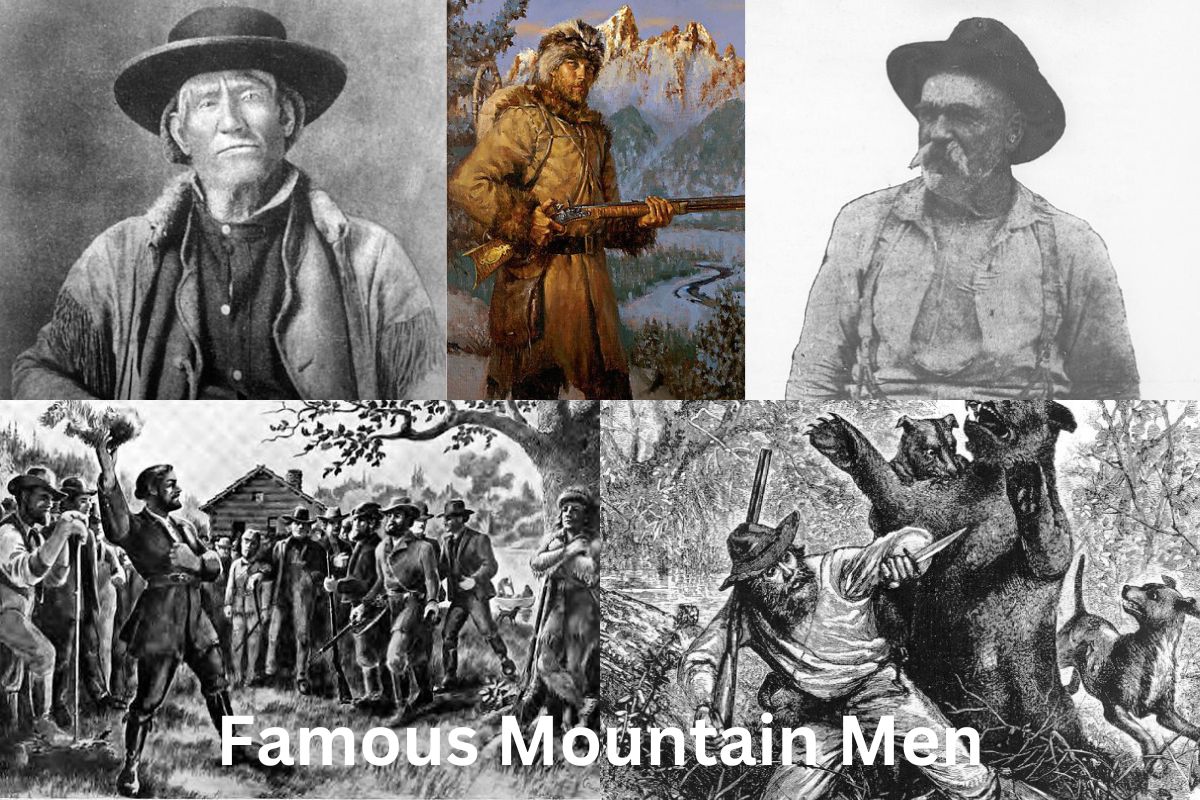Throughout the 18th and 19th centuries, mountain men were a group of explorers, fur traders, and adventurers who lived and worked in the North American wilderness.
They were most active in the United States and Canada’s Rocky Mountains, Pacific Northwest, and Great Plains regions. These men were famed for their tough independence, self-sufficiency, and extensive wilderness knowledge.
They were instrumental in opening up the western United States to trade and settlement, and their exploits and adventures have become folklore.
Mountain men led a difficult and perilous lifestyle, contending with extreme weather, violent fauna, and frequently hostile contacts with Native American groups.
Despite these obstacles, they were drawn to the wilderness’s independence and adventure, and many of them became famous personalities in American history.
Famous Mountain Men
1. Jim Bridger
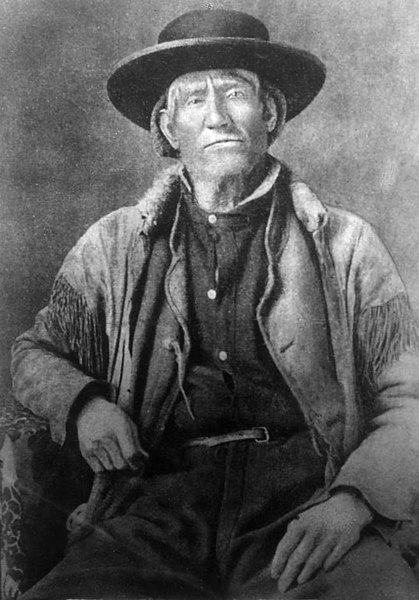
Jim Bridger (1804-1881) was an American mountain man, fur trader, and guide. He was born in Richmond, Virginia, and spent his childhood in Missouri. In 1822, he joined a beaver trapping expedition commanded by William Ashley in the Rocky Mountains. Bridger rapidly established himself as a skilled hunter, trapper, and guide, and he spent the next few decades exploring and trading in the West.
Bridger was among the first white men to witness the geysers and hot springs of what is now known as Yellowstone National Park. He also discovered Utah’s Great Salt Lake and contributed to the mapping of most of the western United States. He was well-known for his land knowledge, ability to speak many Native American languages, and willingness to take chances.
Bridger was also involved in a number of significant events in American history. He led the United States Army during the Mexican-American War and advised the United States government during discussions with Native American tribes. In 1868, he witnessed the signing of the Treaty of Fort Laramie, which served to bring peace between the Sioux Nation and the United States government.
Bridger withdrew from the fur trade in 1865 and lived in Missouri for the rest of his life. He died at the age of 77 in 1881. He is known as one of America’s most famous and legendary mountain men.
2. Kit Carson
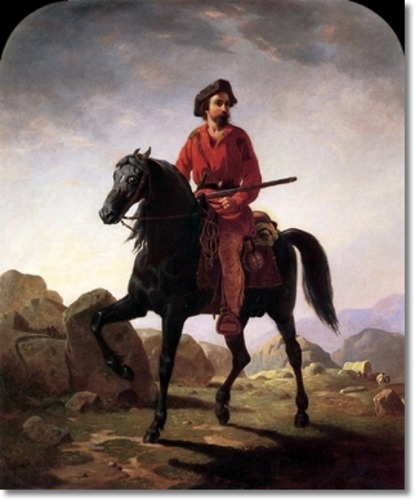
Kit Carson (1809-1868) was a frontiersman, explorer, and Indian agent from the United States who helped to open up the American West. He was born in Kentucky and spent much of his life in the western United States.
Carson rose to notoriety as a guide on John C. Fremont’s missions in the West, and he was well-known for his abilities as a trapper and scout.
He was also involved in several confrontations with Native American tribes, including the Navajo and Apache, and was essential in the conquest of these nations by the United States.
Carson was a frontiersman as well as an Indian agent, negotiating treaties between the United States government and Native American tribes. He was known for his compassion for the suffering of the tribes, and he worked to improve their living conditions and preserve their way of life.
Carson’s legacy is tainted by his involvement in the forced evacuation and subjugation of Native American tribes.
He is, nonetheless, remembered as a skilled frontiersman and a crucial figure in the history of the American West. His life and legacy are still being debated and discussed today.
3. John Colter
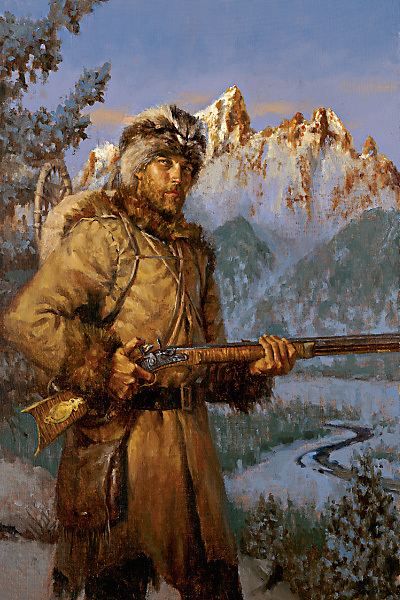
From 1774 to 1812, John Colter was an American mountain man, fur trapper, and adventurer. In 1803, he joined the Lewis and Clark Expedition, which was formed to explore and chart the recently acquired Louisiana Territory.
Colter returned to the western United States after the voyage and worked as a fur trapper and mountain man. He spent several years exploring the Rocky Mountains and the Yellowstone region, and he is often regarded as the first white man to visit what is now Yellowstone National Park.
Colter is also remembered for his daring escape from a band of Blackfoot Indians in 1808. After being apprehended and stripped naked, he managed to run and crawl almost 250 miles to a trade post on the Missouri River.
Colter left the fur trade in 1810 to rejoin his family in Missouri. He was killed in a gunfight with Native People two years later. Despite his brief mountain career, Colter is acknowledged as one of the most famous and legendary men in American history, and his exploits continue to inspire people today.
4. Jedediah Smith
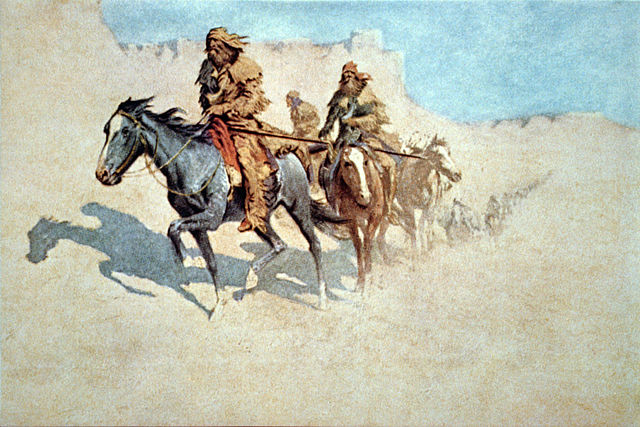
Jedediah Smith (1799-1831) was an American explorer and trapper who helped to shape the American West. He became a fur trapper in his late teens, journeying to the Rocky Mountains, the Great Plains, and the Pacific Northwest to trade for beaver pelts.
Smith was noted for his audacity, resourcefulness, and willingness to take chances. He was the first American to cross the Sierra Nevada Mountains and the Mojave Desert, and he discovered the South Pass over the Rocky Mountains, which became a famous westward migration route.
During an expedition to explore the Southwest in 1831, Smith was killed by Comanche Indians.
Despite his short life, he made significant contributions to the opening up of the American West, mapping previously unknown territory and identifying routes that became vital to the US’s expansion. Today, he is regarded as one of America’s greatest explorers and pioneers.
5. Hugh Glass
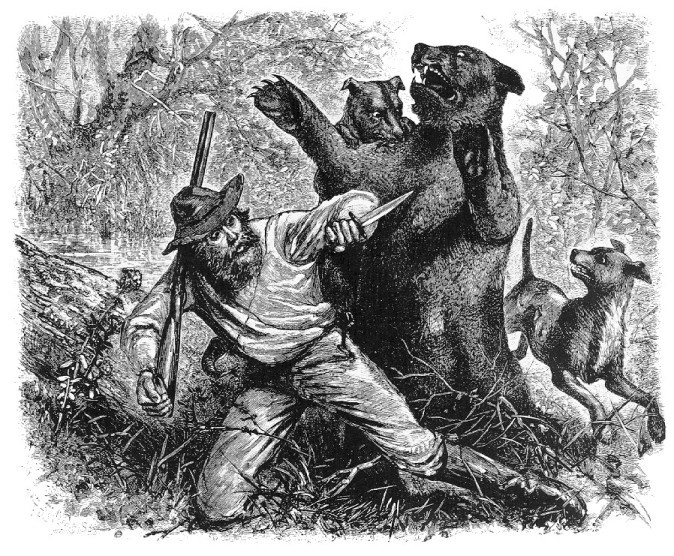
Hugh Glass was a mountain man and American frontiersman who lived from 1783 to 1833. Born in Pennsylvania, he worked as a fur trapper in the western United States in the early nineteenth century.
Glass is well known for his remarkable survival story following his mauling by a grizzly bear in 1823. His fellow trappers abandoned him for dead, but he crawled nearly 200 kilometers to safety, suffering harsh weather and hostile Native American tribes along the way.
Glass kept working as a trapper and adventurer in the western United States after his remarkable survival. He was well-known for his ruggedness, ability to communicate in numerous Native American languages, and extensive knowledge of the woods.
Glass was killed in an Arikara Native attack on the Yellowstone River in 1833. Despite his brief mountain man career, he is remembered as one of the most renowned and mythical figures in American history, and his narrative has been the topic of several novels, films, and songs.
6. William Sublette
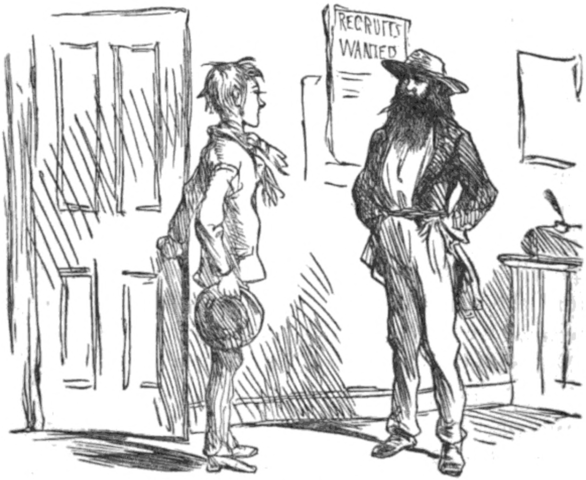
William Sublette was an American mountain man and fur trader who lived from 1799 to 1845. He was born in Kentucky and eventually traveled to Missouri, where he began working for the American Fur Company as a trader.
Sublette quit the American Fur Company in 1822 to join a band of independent trappers and dealers. He rapidly established himself as a good negotiator and dealer, and he was instrumental in allowing trade and colonization to flourish in the Rocky Mountains.
Sublette is most known for organizing the first large wagon train of emigrants to go from Missouri to Oregon in 1843. The trek, dubbed the “Great Migration,” was a watershed moment in American history, establishing the Oregon Trail as a vital path for westward development.
Sublette left the fur trade in the 1830s to pursue a career in politics. In 1843, he was elected mayor of St. Louis, and he later became a member of the Missouri State Assembly.
Sublette died at the age of 46 in 1845. Despite his brief life, he is renowned as one of America’s most important and revered mountain men, and his legacy continues to inspire people today.
7. Joe Meek
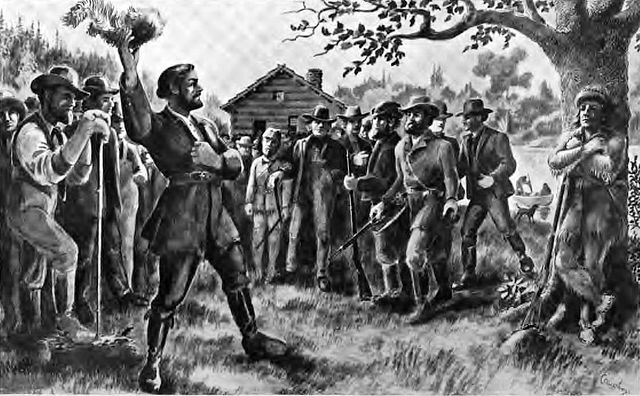
Joseph Meek was an American trapper, mountain man, and frontiersman who lived from 1810 to 1875. He was born in Virginia and eventually migrated to Missouri, where he began working as a trapper in the west.
Meek swiftly rose to prominence as a talented and respected frontiersman, recognized for his fearlessness, superior marksmanship, and ability to interact with Native American tribes.
He was involved in several major events, including the Whitman Massacre and the Cayuse War, and he played an important role in the early history of the Oregon Territory.
Meek is also well-known for his escapades and exploits, which have become legend. He evaded capture by a party of Blackfoot Indians after multiple encounters with hostile Native American tribes.
Meek entered politics after retiring from the fur trade in the 1840s. He was the first sheriff of Marion County, Oregon, and later served in the Oregon State Legislature.
Meek died at the age of 64 in 1875. He is recognized as one of America’s most famous and revered mountain men, and his life and adventures continue to inspire others to this day.
8. Thomas Fitzpatrick
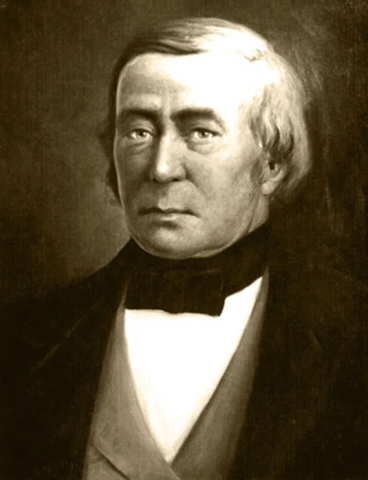
From 1799 to 1854, Thomas Fitzpatrick was an American fur trapper, merchant, and mountain man. He was born in New York and eventually traveled to Missouri, where he began working for the American Fur Company as a trader.
Fitzpatrick quit the American Fur Company in 1823 to join a band of independent trappers and traders. He swiftly rose to prominence as a talented and renowned frontiersman, recognized for his fearlessness, superior marksmanship, and ability to connect with Native American tribes.
Fitzpatrick was instrumental in bringing trade and settlement to the western United States. He was involved in several key events, including the Battle of Pierre’s Hole and the Taos Rebellion, and helped to establish multiple trading stations and forts in the Rocky Mountains and the Great Plains. Fitzpatrick was also well-known as a guide and scout.
In the 1840s, Fitzpatrick withdrew from the fur trade and entered politics. He was the Territory of Nebraska’s first delegate to Congress, and he later became a member of the Colorado Territorial Legislature.
Fitzpatrick died at the age of 55 in 1854. He is known as one of America’s most famous and revered mountain men, and his legacy continues to inspire people to this day.
9. Osborne Russell
From 1814 to 1892, Osborne Russell was an American mountain man, fur trapper, and author. He was born in Maine and later migrated to Missouri, where he began working as a fur trapper in the west.
Russell lived in the Rocky Mountains and the Pacific Northwest for several years, keeping a thorough journal of his adventures and experiences. His notebook is an important personal description of mountain men life and culture in the mid-nineteenth century.
Russell was an important figure in Oregon’s early history, in addition to his job as a trapper. He was involved in several historic events, including the Whitman Massacre and the Cayuse War, and he helped create the first permanent settlement in the Willamette Valley.
Russell’s notebook was ultimately turned into a book called “Journal of a Trapper,” which is regarded as one of the most important and influential accounts of the mountain man era. The book, which has become a classic of American literature, presents a vivid and thorough portrayal of the mountain men’s hardships and exploits.
Russell passed away in 1892, at the age of 78. He is remembered as one of America’s most prominent and renowned mountain men, and his journal is still read and studied by researchers and fans today.
10. Liver-Eating Johnson
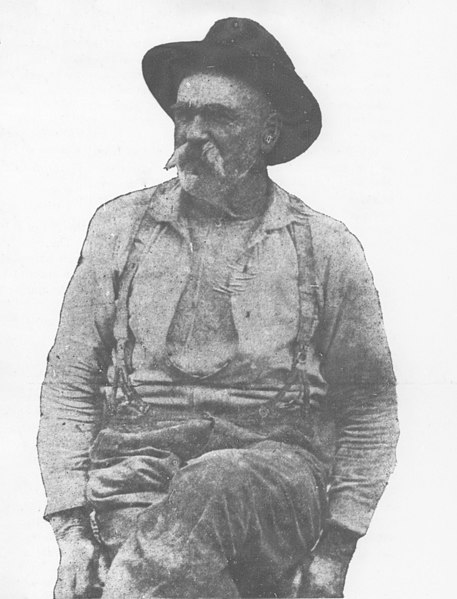
Liver-Eating Johnson, sometimes known as John Johnston, was an American trapper and mountain man who lived between 1824 and 1900. He was born in New Jersey and eventually relocated to the west to work as a trapper.
Johnson became famous for allegedly devouring the livers of his adversaries, mainly Crow Indians, in order to exact retribution. While the veracity of this anecdote is debatable, Johnson was known for his fiery temper and determination to exact vengeance on those who had harmed him or his family.
Johnson’s frightening reputation as a frontiersman was also based on his physical strength and talent as a hunter and tracker. He was famed for his ability to explore the wilderness and survive in difficult conditions, and he survived multiple encounters with hostile Native American groups.
Johnson migrated to California and became interested in politics after retiring from the fur trade in the late 1860s. He was a county commissioner and a state legislator before becoming a deputy U.S. Marshal.
Johnson passed away in 1900, at the age of 76. Despite his contentious reputation, he is remembered as one of America’s most famous and legendary mountain men, and his life and experiences continue to inspire people today.
